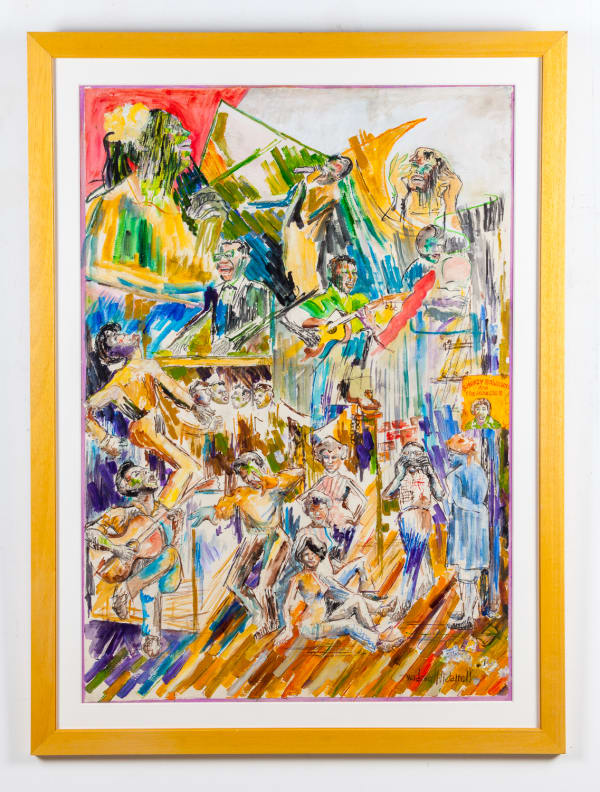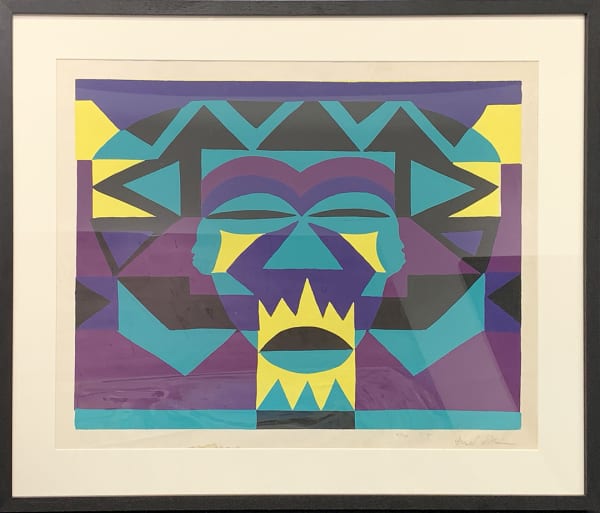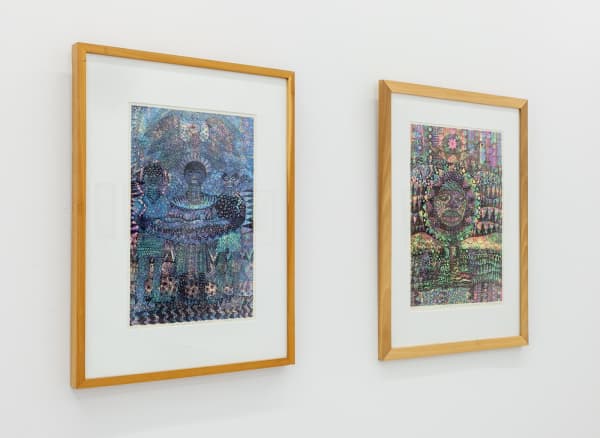-
-
Kavi Gupta presents Wadsworth Jarrell and Gerald Williams: Works on Paper, the first exhibition to center the quieter, more speculative works on paper that helped define the distinctive visual languages of these two crucial founders of AFRICOBRA.
-
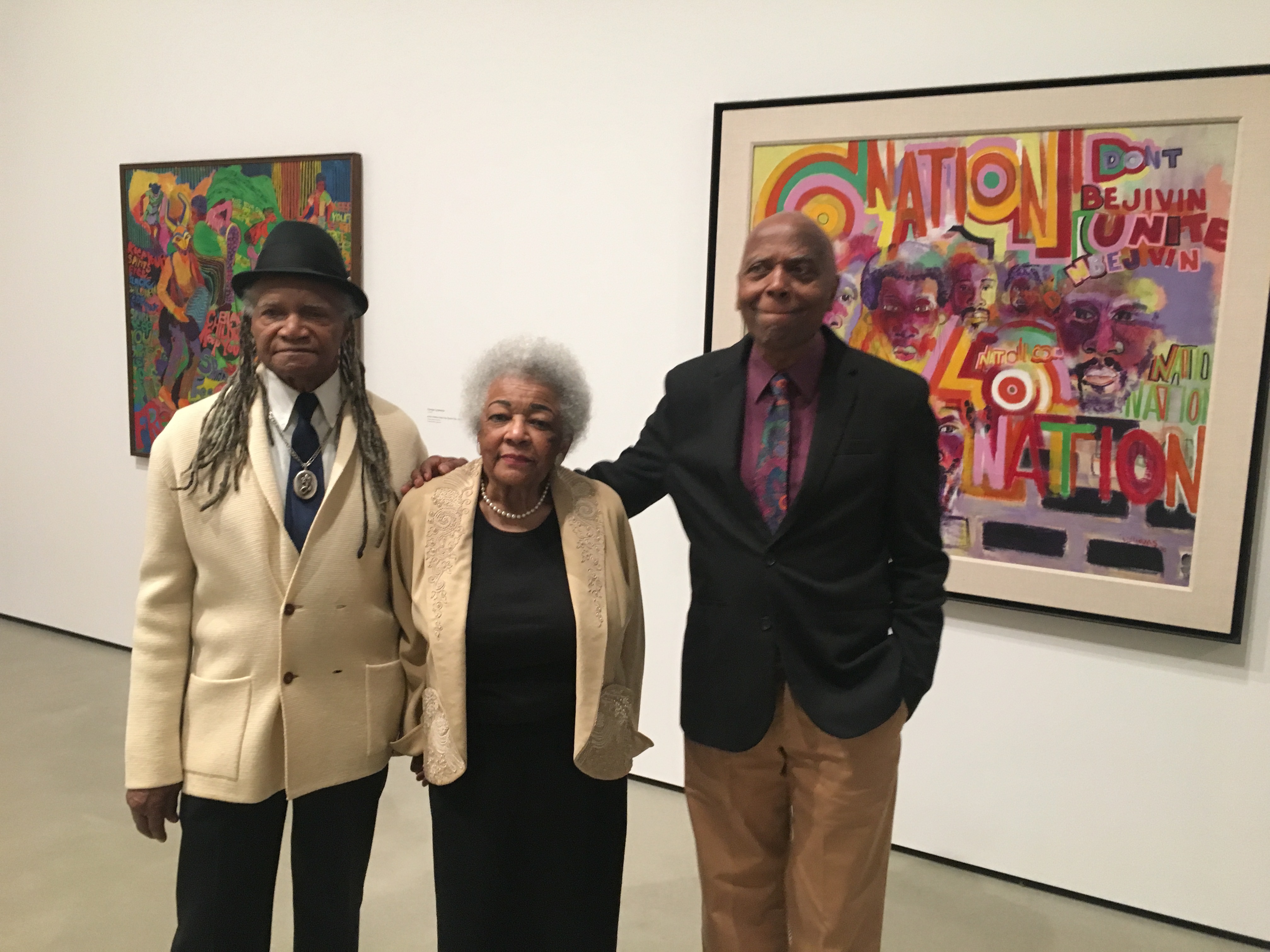
Wadsworth Jarrell, Jae Jarrell, and Gerald Williams
-
Since their recent inclusion in such internationally acclaimed exhibitions as Soul of a Nation, AFRICOBRA 50, and AFRICOBRA: Nation Time, an official collateral exhibition of the 2019 Venice Biennale, Jarrell and Williams are known mostly for their painterly works on canvas and panel.
Featuring a broad selection of drawings, prints, and paintings on paper, some never before exhibited, Works on Paper spotlights a cross-section of formal and technical innovations that the artists worked through over the decades and which came to define their individual positions.
This rarely seen side of the two artists offers insights into the roots of their historic paintings, and expands upon the story of their transformation from artistic revolutionaries into contemporary legends.
-
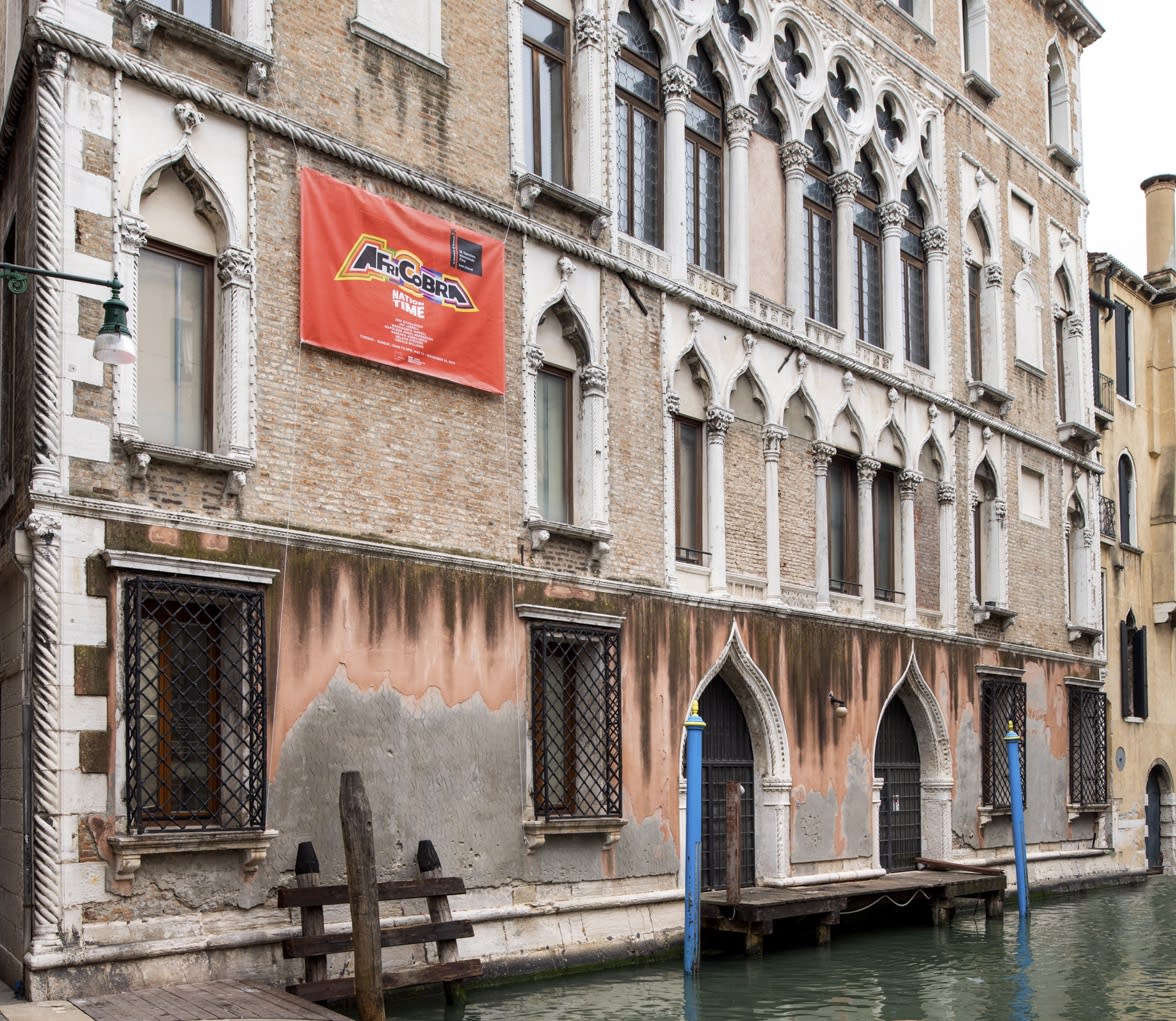
AFRICOBRA: Nation Time, an official collateral exhibition of the 2019 Venice Biennale
-
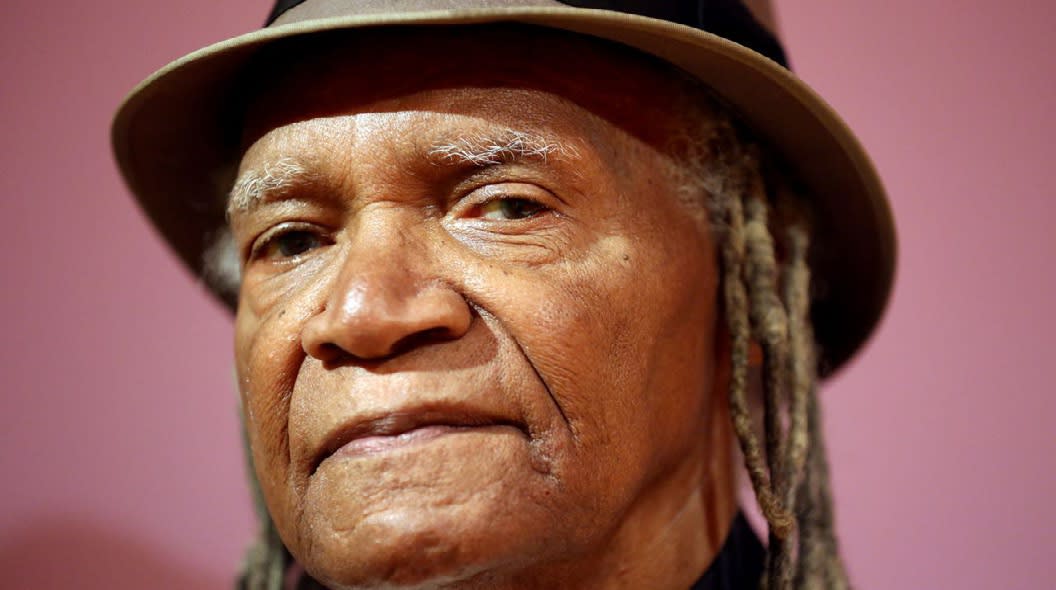
Wadsworth Jarrell
-
This presentation’s story begins before the founding of AFRICOBRA, when a young Wadsworth Jarrell was seeking to capture a snapshot of Black American life.
Jarrell’s early works depicting jazz clubs, street markets, and neighborhood hangouts—such as Sketch for Mackin’ the Game, which shows a busy street scene— speak to a particular time and place with simple but expressive honesty.
Some of these works feature seemingly specific references such as Charlie’s Rib Joint, Cozy Lounge, and J&S Clothing, which are hard to locate in history. Others, such as Sundown Ladies, depict widely recognizable cultural icons, such as a listing for the Muddy Waters Band on the marquee for Pepper’s Lounge, which opened in 1956 at 503 E. 43rd Street in Bronzeville, and a discarded copy of the Chicago Defender—the largest Black-owned daily newspaper in the country at the time—in a nearby gutter.
-
Study for the Wall of Respect offers a glimpse of a crucial turning point for Jarrell’s development, which coincided with a milestone in Chicago art history. A collaborative project spearheaded by The Organization of Black American Culture (OBAC) in 1967, the Wall of Respect brought 14 artists together to create a monumental mural at the corner of 43rd Street and Langley Avenue in Chicago. Jarrell’s contribution was a tribute to jazz inspired by his personal passion for the artform—a profound influence on his work to this day.
-
The Wall of Respect stood as a public declaration to Black culture, featuring imagery of Nat Turner, Elijah Muhammad, Malcolm X, Mu hammad Ali, Gwendolyn Brooks, W.E.B. Dubois, Marcus Garvey, Aretha Franklin, and Harriet Tubman, amongst others. Art historians note that the Wall of Respect may have been the first ever collective street mural in the country, a testament to the revolutionary and collaborative spirit of the age. Innumerable other murals inspired by it would spring forth in ensuing decades.
These raw, energetic studies led Jarrell to create some of his greatest masterpieces of the AFRICOBRA era, including the muralesque painting Homage to a Giant.
-
Jarrell and his family briefly moved from Chicago to Connecticut in the early 1970s before settling in Washington, D.C. where he taught Howard University. Deprived temporarily of many of his painting supplies amidst the move, Jarrell lined the walls of their apartment with brown craft paper, on which he could draw without restraint.
Chief amongst his interests were the various leaders of the Civil Rights Movement, whose images were widespread and immediately recognizable at the time. Of the large number of drawings Jarrell produced in that moment, unfortunately, only a small number have survived. Presented here are his portraits of Huey P. Newton and Bobby Seale, co-founders of The Black Panthers.
-
The move to Washington, DC gave Jarrell access to print facilities, and with that opportunity, he produced the iconic Revolutionary print featured in Works on Paper. In service to AFRICOBRA’s key goals—a desire to make art for the people—Jarrell and the other members of AFRICOBRA produced original prints of their audiences’ favorite paintings, which they made available as inexpensive entry points to collecting.
-
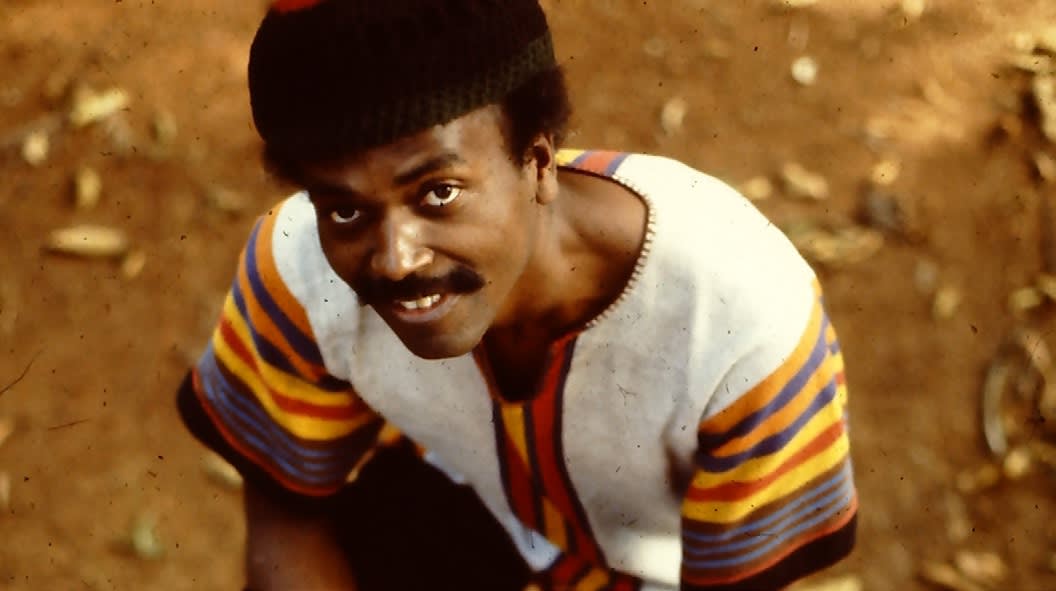
Gerald Williams
-
Gerald Williams enrolled as a graduate student at Howard University in 1974. His graduate thesis examined “polyrhythm,”—a musical term describing the perfect harmonies and purposeful dissonances that arise from the use of simultaneous, overlaying, seemingly contrary rhythms.
Williams proposed that the technique could similarly be applied to visual arts, with the internal optical rhythms of a piece complementing and contrasting both within itself and against other pieces shown together.
Incorporating polyrhythm into his further experiments with AFRICOBRA ideals, he produced the series of freeform, hand-block silkscreens to which Emerge and Big Payback, Get Ready belong. Hand-painting wax and other material resists directly onto the silkscreen, Williams’ painterly hand is maintained, lending the pieces an energetic rhythm which strongly relates to his larger academic interests at this time.
-
-
In 1977, AFRICOBRA was invited to represent the United States at FESTAC ’77, the Second World Black and African Festival of Arts and Culture in Lagos, Nigeria. The event was attended by more than 15,000 artists of African descent from around the world. Inspired by his participation in the festival, Williams resolved to return to Africa as soon as possible.
Only months later, he joined the Peace Corps, accepting an assignment as Prevocational Director in the Jacaranda School for the Mentally Handicapped in Nairobi, Kenya.
Williams’ creative practice evolved dramatically in Kenya. His mark-making slowed down and his practice became increasingly laborious and contemplative. Inspired in part by the clarity of light that Africa afforded him, he began an exploration of pointillist gestures, contemplating how the world was comprised entirely by ever smaller dots, representing cells, molecules, atoms, and subatomic particles.
-
-
For The Children of Soweto references a series of demonstrations and protests that began in 1976 in Soweto, South Africa, in which students from numerous Sowetan schools rose up in response to the introduction of Afrikaans as the medium of instruction in local schools. It is estimated that 20,000 students took part in the Soweto Uprising. They were met with fierce police brutality resulting in more than 170 confirmed deaths, with some estimates proposing nearly four times that number. The violence drew international attention and marked a major turning point in the global dialog about Apartheid in South Africa, with the United Nations passing Resolution 392 the same year to condemn the institution.
-
The Soweto Uprising became a major focal point for the members of AFRICOBRA, and in 1979, they participated in SoWeTo, an exhibition dedicated to the victims and survivors, held at the United Nations in New York. Williams’ drawing for the show, executed in 1978, was translated into the print seen here in 1982.
Williams continued to travel the world following his time in Africa, spending five years in Korea, three years in Japan, and stints of time in Italy, the Azores, and various locales within the United States.
Throughout his travels, he continuously innovated with form and technique, expanding his practice to include delicate stain pieces, multilayered, transparent glass works, and a variety of collages.
One series of sculpturally manipulated paper works produced while he was in Asia shows Williams experimenting with hand embossing and debossing effects to achieve what he describes as “drawings without drawing.”
-
Williams moved back to Chicago in 2015, where he continues to live and work in the Woodlawn Neighborhood, not far from where he grew up. His newest works demonstrate his sustained interest in increasingly granular pointillism, and his continuous desire to experiment and expand his practice to include new gestures and media.
-
-
Wadsworth Jarrell and Gerald Williams: Works on Paper is on view July 10 through September 11th at Kavi Gupta, 219 N. Elizabeth St., Floor 2, in Chicago.


